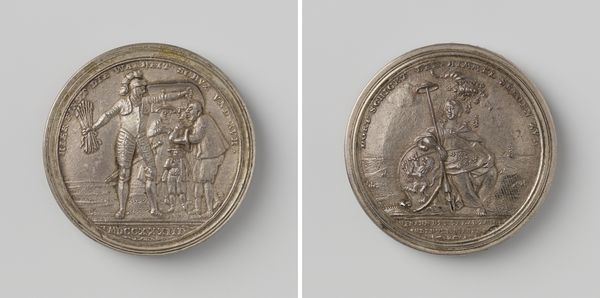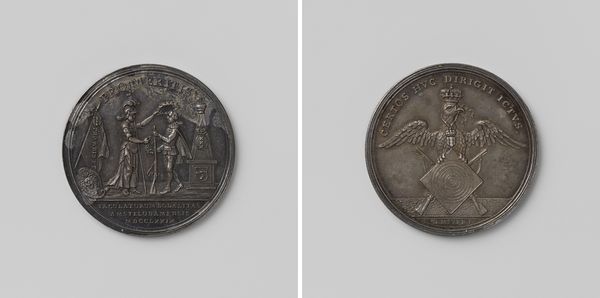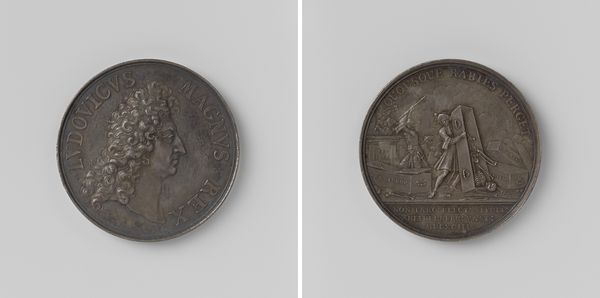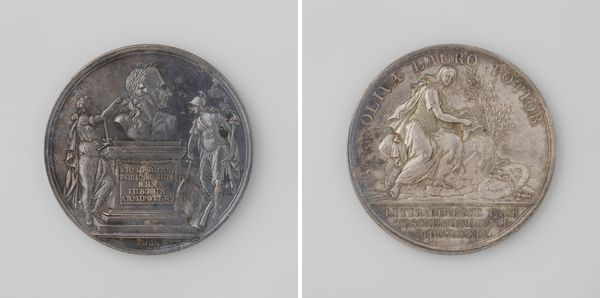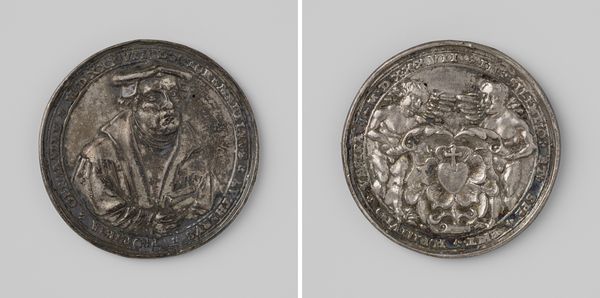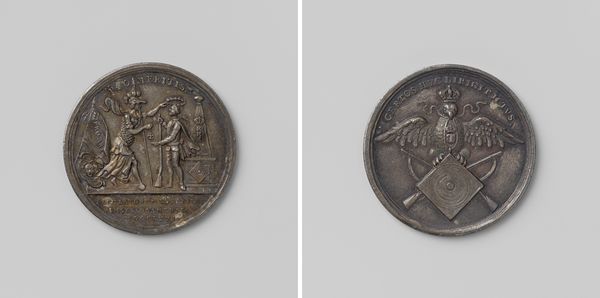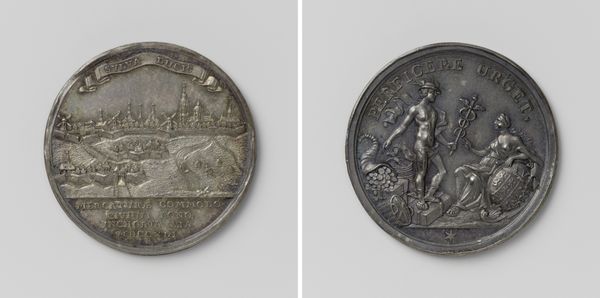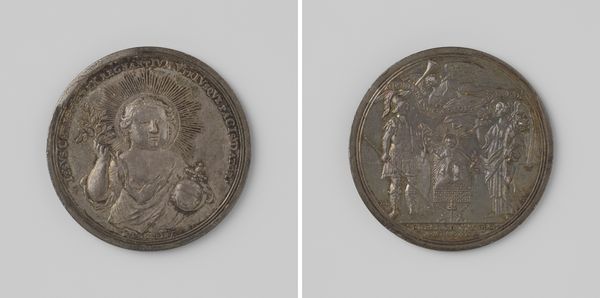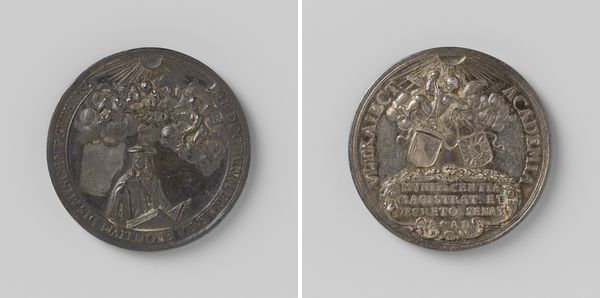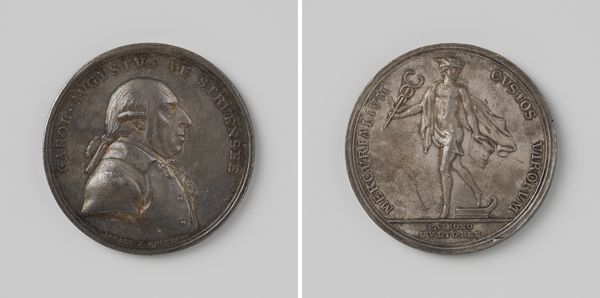
metal, sculpture, engraving
#
neoclacissism
#
metal
#
sculpture
#
sculpture
#
history-painting
#
engraving
Dimensions: diameter 4.2 cm, weight 24.60 gr
Copyright: Rijks Museum: Open Domain
Curator: What a fascinating piece of commemorative metalwork! This is an engraving by Daniel Friedrich Loos, dating from 1814, titled "Eerste vrede van Parijs tussen Frankrijk en de geallieerden," celebrating the first Peace of Paris between France and the allied forces. Editor: The moment I see it, the word that springs to mind is ‘relief’. The composition certainly aims to portray peace and solace in classical relief style. It is interesting, given that the reality surrounding its creation was much more tense. Curator: Precisely! The visual language is fascinating. Loos clearly employs neoclassicism, evident in the idealized figures and the allegorical representation of Peace as a female figure, presumably a personification. The choice of metal emphasizes the permanency of the achievement the piece represents. What’s particularly interesting to me is how the act of commemorating the peace also performs it – the object itself reinforces political messaging. Editor: And how deliberately the imagery on each side work together! On one side you have ‘Peace’ literally floating on the clouds with what seems like a child, handing her flowers, representing rebirth and prosperity; on the other, you have these huddled figures overshadowed by divine light coming from above, with the powerful statement 'Alles Was Odem Hat, Lobe Den Herrn’, praising God and highlighting restoration. I think that there is an explicit sense of wanting to be on the 'right' side of history! Curator: Yes, you bring up an important element – this notion of divine sanction. It certainly tells us how the restored monarchy was keen to frame the events as divinely ordained to guarantee stability. This engraving is a document about shaping public sentiment and controlling a narrative after a tumultuous time in France. It presents an event within the larger sociopolitical context, something that seems so easy to take for granted today, especially when one considers what peace looked like for all in that period. Editor: Considering this today gives it renewed perspective: We get the historical details, but through the artist's rendering we also get insight into their feelings around them! It becomes a relic of a specific aspiration of lasting peace. Curator: A material echo of a moment that reminds us that even celebrations are coded with intent. Editor: Exactly, It provides a perspective of how society saw peace back then, as we imagine peace for ourselves, now.
Comments
No comments
Be the first to comment and join the conversation on the ultimate creative platform.
